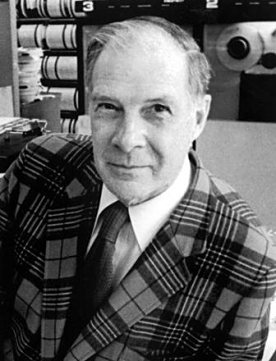Related Research Articles
A teaching method is a set of principles and methods used by teachers to enable student learning. These strategies are determined partly on subject matter to be taught, partly by the relative expertise of the learners, and partly by constraints caused by the learning environment. For a particular teaching method to be appropriate and efficient it has take into account the learner, the nature of the subject matter, and the type of learning it is supposed to bring about.

Richard Wesley Hamming was an American mathematician whose work had many implications for computer engineering and telecommunications. His contributions include the Hamming code, the Hamming window, Hamming numbers, sphere-packing, Hamming graph concepts, and the Hamming distance.

National Institute of Technology Warangal is a public technical and research university located in Warangal, India. It is recognised as an Institute of National Importance by the Government of India. The foundation stone for this institute was laid by then Prime Minister Jawaharlal Nehru on 1959, the first in the chain of 31 NITs in the country. The institute was renamed as the National Institute of Technology, Warangal in 2002.

A viral video is a video that becomes popular through a viral process of Internet sharing, typically through video sharing websites such as YouTube as well as social media and email. For a video to be shareable or spreadable, it must focus on the social logics and cultural practices that have enabled and popularized these new platforms.

Jawed Karim is a Bangladeshi-German origin American software engineer and Internet entrepreneur. He is a co-founder of YouTube and the first person to upload a video to the site. The site's inaugural video, "Me at the zoo", uploaded on April 23, 2005, has been viewed over 310 million times as of March 4, 2024. During Karim's time working at PayPal, where he met fellow YouTube co-founders Steven Chen and Chad Hurley, he designed many of its core components, including its real-time anti-fraud system.

Donald Robert Sadoway is professor emeritus of materials chemistry at the Massachusetts Institute of Technology. He is a noted expert on batteries and has done significant research on how to improve the performance and longevity of portable power sources. In parallel, he is an expert on the extraction of metals from their ores and the inventor of molten oxide electrolysis, which has the potential to produce crude steel without the use of carbon reductant thereby totally eliminating greenhouse gas emissions.

Randolph Frederick Pausch was an American educator, a professor of computer science, human–computer interaction, and design at Carnegie Mellon University (CMU) in Pittsburgh, Pennsylvania.
Raj Kumar Goel Institute of Technology (RKGIT), is a private college in Ghaziabad, India. It is affiliated to Dr. A.P.J. Abdul Kalam Technical University.

"Really Achieving Your Childhood Dreams" was a lecture given by Carnegie Mellon University computer science professor Randy Pausch on September 18, 2007, that received widespread media coverage, and was the basis for The Last Lecture, a New York Times best-selling book co-authored with Wall Street Journal reporter Jeffrey Zaslow. Pausch had been diagnosed with pancreatic cancer in September 2006. On September 19, 2006, Pausch underwent a pancreaticoduodenectomy to remove the malignant tumor from his pancreas. In August 2007, doctors discovered that the cancer had recurred. Pausch was given a terminal diagnosis and told to expect that three to six months of good health remained.
Samuel Jefferson Mason (1921–1974) was an American electronics engineer. Mason's invariant and Mason's rule are named after him.

Periodic Videos is a video project and YouTube channel on chemistry. It consists of a series of videos about chemical elements and the periodic table, with additional videos on other topics in chemistry and related fields. They are published on YouTube and produced by Brady Haran, a former BBC video journalist, mainly featuring Sir Martyn Poliakoff, Peter Licence, Stephen Liddle, Debbie Kays, Neil Barnes, Sam Tang, and other scientists at the University of Nottingham.

A flipped classroom is an instructional strategy and a type of blended learning, which aims to increase student engagement and learning by having pupils complete readings at home and work on live problem-solving during class time. This pedagogical style moves activities, including those that may have traditionally been considered homework, into the classroom. With a flipped classroom, students watch online lectures, collaborate in online discussions, or carry out research at home, while actively engaging concepts in the classroom, with a mentor's guidance.

Irfan Aziz Essa is a professor in the School of Interactive Computing of the College of Computing, and adjunct professor in the School of Electrical and Computer Engineering at the Georgia Institute of Technology. He is an associate dean in Georgia Tech's College of Computing and the director of the new Interdisciplinary Research Center for Machine Learning at Georgia Tech (ML@GT).

Webdriver Torso is a YouTube automated performance testing account that became famous in 2014 for speculations about its nature and jokes featured in some of its videos.
Social media in education is the use of social media to enhance education. Social media is "a group of Internet-based applications...that allow the creation and exchange of user-generated content". It is also known as the read/write web. As time went on and technology evolved, social media has been an integral part of people's lives, including students, scholars, and teachers in the form of social media. However, social media is controversial because in addition to providing new means of connection, critics claim that it damages self-esteem, shortens attention spans, and increases mental health issues.
Suhash Chandra Dutta Roy is an Indian electrical engineer and a former professor and head of the department of electrical engineering at the Indian Institute of Technology, Delhi. He is known for his studies on analog and digital signal processing and is an elected fellow of all the three major Indian science academies viz. Indian Academy of Sciences, Indian National Science Academy, National Academy of Sciences, India as well as the Institute of Electrical and Electronics Engineers, Institution of Electronics and Telecommunication Engineers, Systems Society of India and Acoustical Society of India, The Council of Scientific and Industrial Research, the apex agency of the Government of India for scientific research, awarded him the Shanti Swarup Bhatnagar Prize for Science and Technology, one of the highest Indian science awards for his contributions to Engineering Sciences in 1981.
Yendluri Shanthi Pavan is an Indian electrical engineer and a professor at the Department of Electrical Engineering of the Indian Institute of Technology, Madras. He is known for his studies on mixed signal VLSI circuits and is an elected fellow of the Indian National Academy of Engineering. He is also a fellow of IEEE. The Council of Scientific and Industrial Research, the apex agency of the Government of India for scientific research, awarded him the Shanti Swarup Bhatnagar Prize for Science and Technology, one of the highest Indian science awards for his contributions to Engineering Sciences in 2012.
Lalit Kumar Goel is a Professor of Electrical Engineering at the Nanyang Technological University, Singapore. He was named Fellow of the Institute of Electrical and Electronics Engineers (IEEE) in 2013 for contributions to the development and application of reliability techniques in electric power systems.
James F. Gibbons is an American electrical engineer and academic administrator. He is credited with starting the semiconductor device fabrication laboratory at Stanford University that enabled the semiconductor industry and created Silicon Valley.
Yeo Kiat Seng is a Singaporean academic and IEEE Fellow known for his contributions to low-power Integrated Circuit (IC) design.
References
- ↑ "ICEM 2000 Review". IEEE Power Engineering Review. 21 (6). Power Engineering Review, IEEE: 14–17. June 2001. doi:10.1109/MPER.2001.925477.
- 1 2 3 4 5 "YouTube makes him a hit on campus". The Straits Times. 5 December 2006. p. Digital Life.
- 1 2 3 4 5 6 7 8 9 Liew Hanqing (14 March 2007). "Dear Prof, your bald head is so... SEXY". The New Paper.
- ↑ Ansley Ng (7 November 2006). "Moustachioed don's five minutes of fame; 'Handsome' prof's light teaching style featured in video clip on Web". TODAY. p. 6.
- ↑ "Singapore's YouTube Hits". The Straits Times. 30 December 2007.